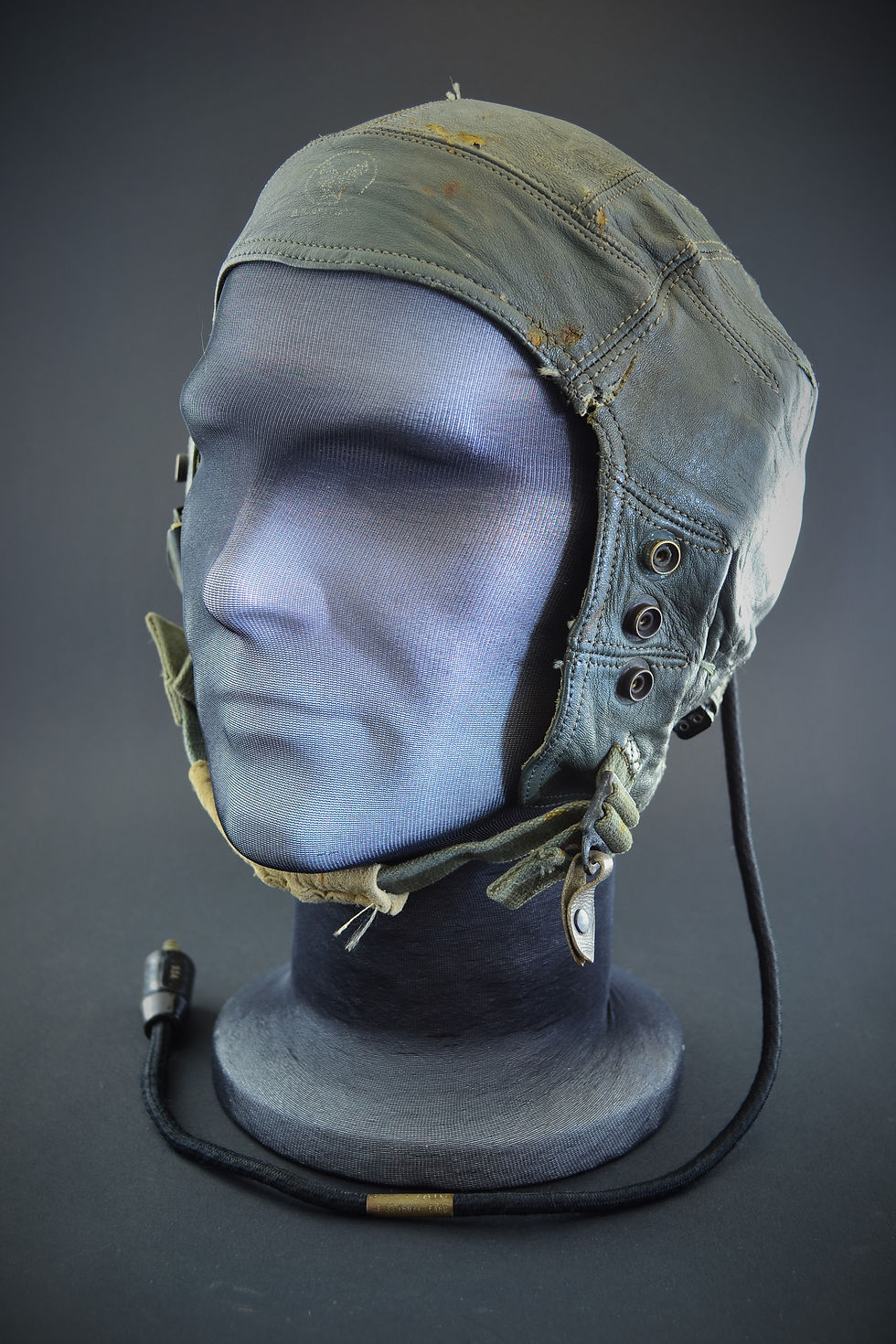




USAF H-71/A-13
Helmet, Flying, H-71/AIC / Type A-13
S/N 8415-222-7749
LITE MFG. Co. Inc.
AF 33 (602)6468
U:S:
Size LARGE
Reference material about the H-71/A-13 is scarce and additional information by visitors of this website are more than welcome.
Appearing after WWII in the mid/late 1950's the H-71 / A-13 was reportedly intended for use in piston and jet propelled transports, tankers, bombers and reconnaissance aircraft. With the arrival of jet fighters and fighter bombers with ejection seats focus was initially and logically switched towards hard shell helmets (or „bone domes“). But it soon appeared after Korea, and with the beginning of the „Cold War“, that soft helmets proved more practical and comfortable in large aircraft, with pressurized cockpits and crew areas, while flying long and tiresome missions for hours on end. The nomenclature seems to have been inverted at some stage, the designation A-13 for the helmet and H-71 for the earphones rather being more logic. But the label tells us something different, the exact reasons remaining unknown.
First examples of this helmet are reported to have actually been Type A-11 intermediate leather helmets taken from existing WWII stocks and equipped with improved HS-38 ear receivers and chamois covered cushions. Thus the initial batches were of brown color.
Later on, production switched to newly fabricated helmets made of grey/green leather with H-75/AIC (or H-71?) headsets with rubber foam donuts, covered with black artificial leather and silk webbing.
This specimen is constructed of grey/green leather with chamois lining. It features two rear goggle straps and a rear size buckle up adjustment strap which passes between the inner lining and the leather shell across the earphone pockets to the upper cheeks.
The internal wiring includes a sewn-on electrical socket on the left side to be connected to the oxygen mask microphone or throat mike. A black braided flex ending with a U93A/U plug enters the helmet at the rear, passing between the leather shell and the chamois lining, connecting with the earphones.
Finally a green/gray webbing chinstrap, partially chamois wrapped, is fixed by a friction buckle on left and a snap fastener on the right.
An oxygen mask, typically a A-14 or a MS22001, can be attached by means of the classic WWII snap fasteners and hook arrangement.